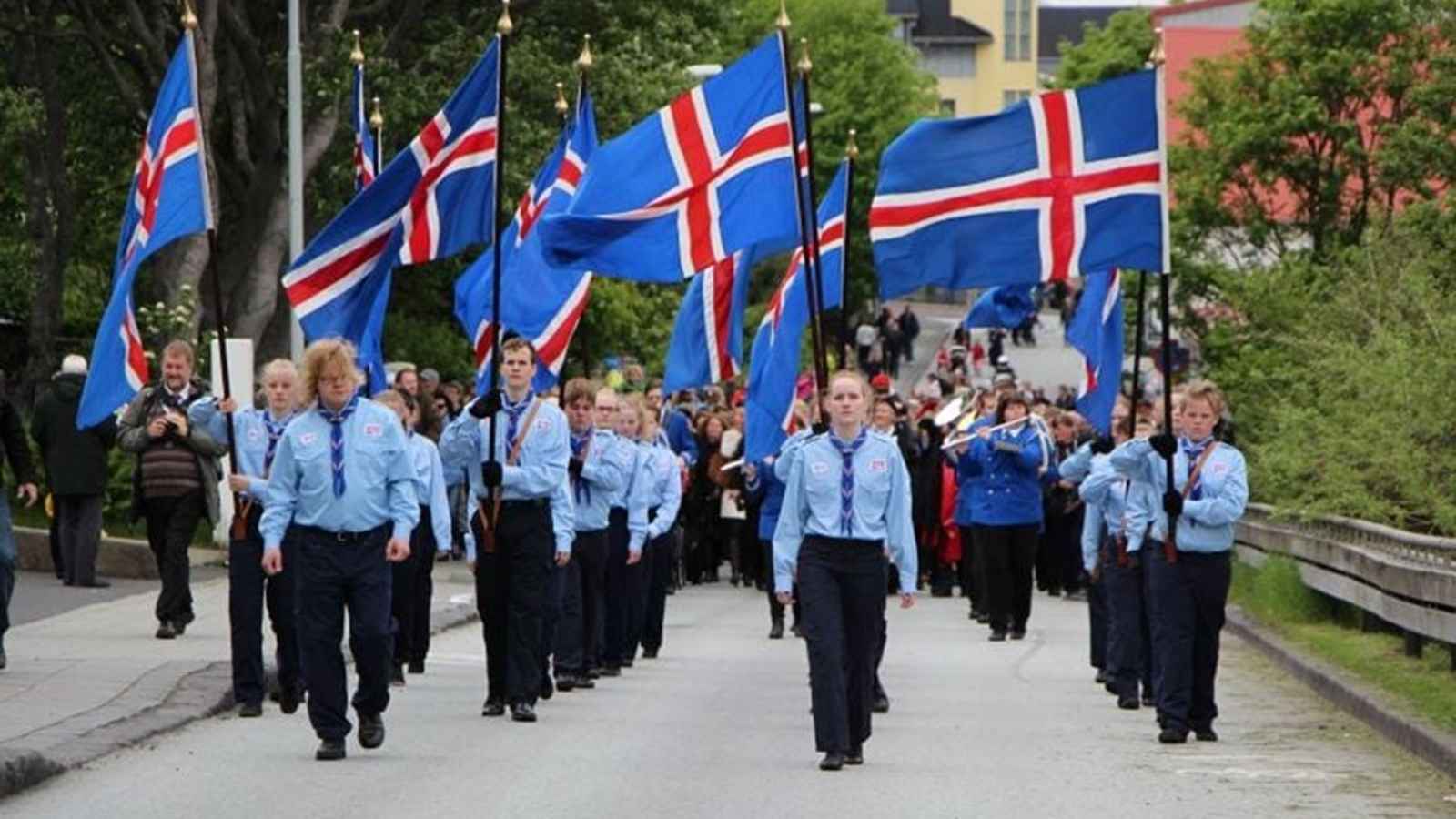Icelandic Independence Day is annually observed on June 17. The holiday commemorates the establishment of the Republic of Iceland in 1944, when the nation became a sovereign republic. The centuries-long relationship between Iceland and Denmark ended on the birthday of Jón Sigursson. He was the chief of the Icelandic independence movement in the 19th century and a prominent figure in Icelandic culture.
Reykjavk, the capital of Iceland, celebrates Independence Day by ringing chimes in unison. The day serves as a reminder of the sacrifices made by the nation’s past champions in order to secure future generations’ freedom. It is a time of tremendous happiness and national pride. Participants in the procession paint their faces with the national flag. The significance of music is significant, and there are musical performances every day.
The background of Iceland Independence Day
Iceland’s Independence Day is a national holiday that is observed throughout the country. There are a variety of activities, including traditional parades. Each city, village, or town hosts a parade, which is typically conducted by a brass band. Riders on Icelandic horses carrying the national flag head the parade. During parades, the Icelandic scout movement also accompanies the band. Following the parade, speeches are given in public. After the public addresses conclude, other, less formal celebrations commence. Typically, this incorporates a range of musical performances.
It appears that Iceland has no prehistorical documents. Two historical texts recall the past of the nation. It is believed that the Norse discovered and inhabited the area during the Viking Age. The “Book of the Icelanders” or “slendingabók” indicates that Iceland was inhabited between 870 and 900 A.D. According to a second source, “Landnámabók,” the “Book of Settlements” from the 12th century, the first permanent inhabitant, Ingólfur Arnarson, arrived in Iceland in 874 A.D. from Norway. He named the settlement he founded Reykjavik. The majority of the colonisers originated from Norway, while others came from other Nordic nations and Norse Viking Age settlements in the British Isles.
In 1602, Denmark monopolised Iceland’s foreign commerce.
Over the years, the Danish monarchy expanded its hold on Iceland, including on a constitutional level. Iceland was given two positions at a new consultative assembly for the Danish Isles in Roskilde, Denmark, in 1803. This sparked a desire in Iceland for the restoration of the Icelandic Althing, the world’s earliest parliament.
In 1874, the King presented Iceland with a constitution that gave the Althing legislative authority over internal affairs; however, the cabinet minister responsible for Iceland was the Danish minister of justice. 1918 marked the separation of Iceland from Denmark, with only foreign affairs remaining under Danish control. In 1940, when Germany occupied Denmark, this union came to an end. In 1941, the United States assumed responsibility for Iceland’s defence, and the forces brought prosperity and employment to the country.
Iceland was proclaimed a republic on June 17, 1944, despite gaining its independence from Denmark on December 1, 1918. The Act of Union with Denmark was signed at that time. The Act established Iceland as a sovereign nation under the Danish monarch. There was a provision in the Act that altered Iceland’s relationship with Denmark. Voters were required to determine whether the Union with Denmark should be dissolved and whether a new republican constitution should be adopted. The voter turnout was 98.4% and both measures were approved by 98% of voters. The holiday commemorates the struggles that contributed to the nation’s independence.
Since 1971, the holiday has been a national public holiday. Since 1945, employers have given their employees the day off. It is a national holiday, and nearly every citizen participates in the festivities.
Arborist Appreciation Day 2023: Date, History, Facts, Activities
Fresh Veggies Day 2023: Date, History, Facts, Activities
International WaterFall Day 2023: Date, History, Facts, Activities
ICELAND INDEPENDENCE DAY ACTIVITIES
Observe the parades.
Participate in the motorcade and collect candy and balloons. Enjoy the bands, concerts, and musical performances. Independence Day in Iceland is commemorated with numerous demonstrations. You may choose to observe or participate.
Join in the festive atmosphere
Dress in the appropriate national attire. Get into the music’s cadence and spend the day dancing. Face-painting the national emblem. Gather with friends, family, or other individuals and enjoy the day. During the holiday, numerous ceremonies occur. Street theatre, outdoor dancing, and sideshows are available.
Fly the flag of Iceland
On the occasion, the Icelandic flag is visible throughout the country. You may carry the flag to signify the freedom of the nation.
5 Interesting Iceland Facts
Sigursson is commonly referred to as “Jón president” despite the fact that he was never president of Iceland.
In 1980, she became the world’s first democratically elected female chief of state.
Guni Th Jóhannesson is the current president of Iceland. Previous presidents include Sveinn Bjornsson, sgeir sgeirsson, Kristján Eldjárn, Vigds Finnbogadóttir, lafur Ragnar Grmsson, and sgeir sgeirsson.
Over sixty percent of Iceland’s population resides in the capital city, Reykjavik.
Recently, the nation was ranked among the eco-friendliest nations.
ICELAND INDEPENDENCE DAY DATES
| Year | Date | Day |
|---|---|---|
| 2023 | June 17 | Saturday |
| 2024 | June 17 | Monday |
| 2025 | June 17 | Tuesday |
| 2026 | June 17 | Wednesday |
| 2027 | June 17 | Thursday |




